Everyone wants smooth hair. That is why pure hairdressers resort to chemical treatments, irons and hair dryers to smooth the hair.
Unfortunately, these methods use heat, which can damage your hair. Heat can disrupt hair proteins and cause moisture to be released from the cuticle.
If your hair is severely burnt, you may be thinking of cutting off your lovely hair. But before moving to desperate measures, you should first try viable solutions.
How to identify heat-damaged hair?
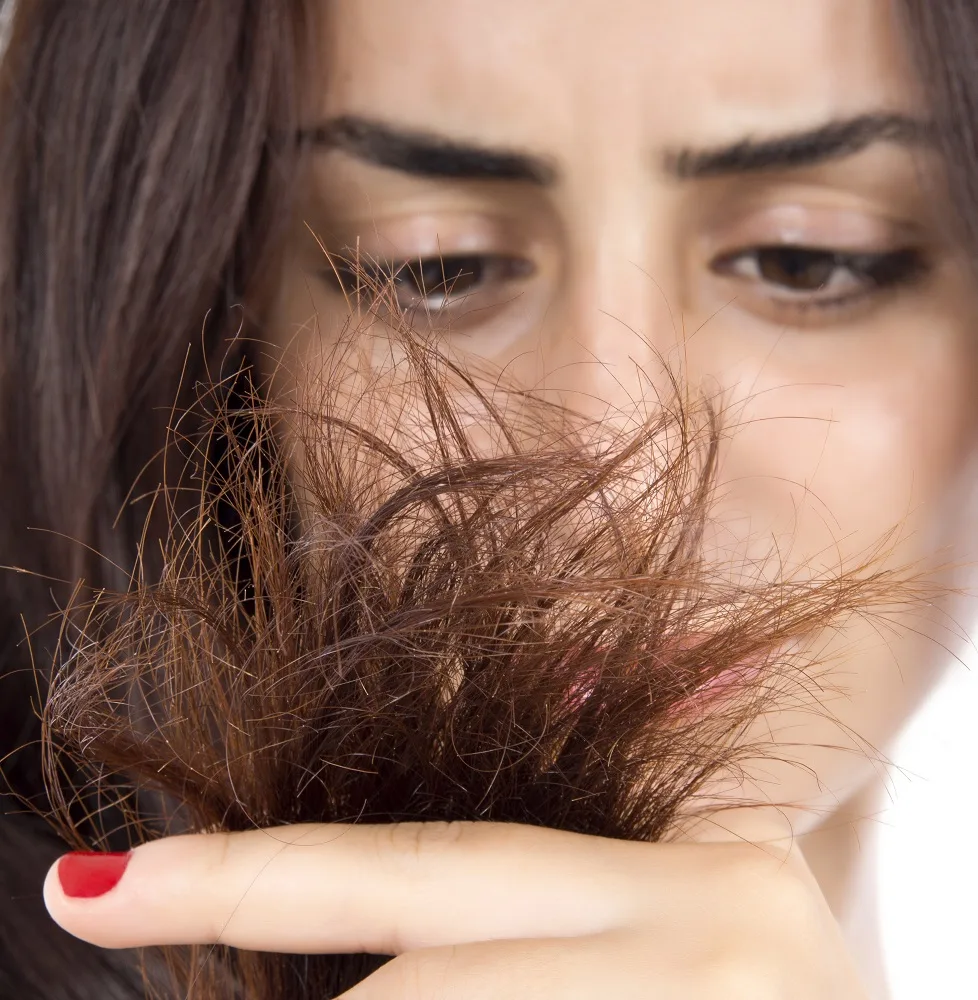
Before looking for a solution, you should first make sure that your hair is dry. There are several factors that can cause your hair to burn. It may be caused by chemicals used to straighten your hair or heating devices such as curling irons.
There are several signs of heat-damaged hair. In addition to the smell, you may also notice:
- stringy hair texture
- divide the ends of the hair
- Hair may break easily
- dry hair
- Hair becomes difficult to manage
- Hair gets tangled easily
How to repair broken hair without cutting it?
If your hair shows any of the above signs, your hair may be burnt. However, there is no need to panic. There are several ways to repair burnt hair and avoid cutting damaged hair.
1. Use hot oil treatment
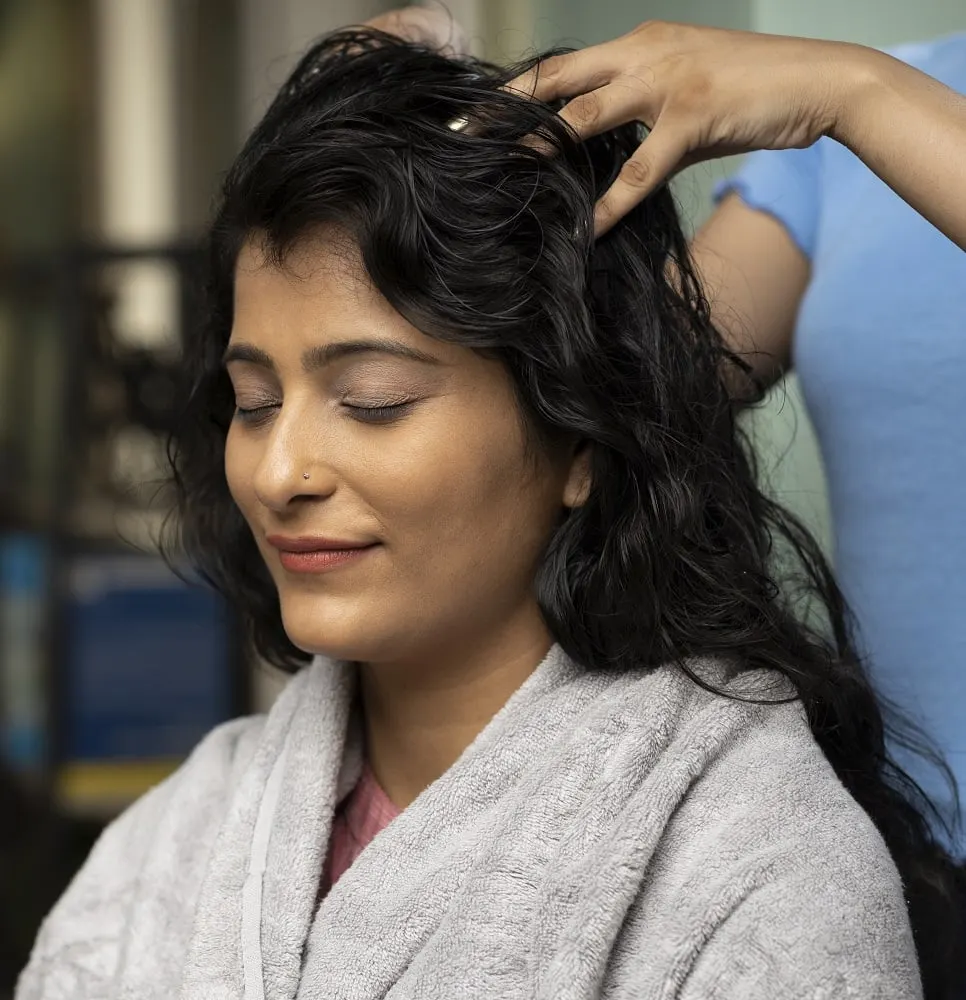
Nothing beats hot oil when it comes to nourishing brittle hair. These oils strengthen the hair cuticle.
Coconut oil’s excellent nourishing abilities make it the perfect hot oil treatment for damaged hair. According to many studies, coconut oil also prevents protein loss from the hair shaft. This will prevent further damage to your burnt hair.
Other plant-based oils that can be used include:
You can get a hot oil treatment at a salon, buy ready-made oil products, or make hot oil at home. If you choose the latter, remember to heat the oil to a moderate temperature.
After warming the oil, apply it from the root to the tip of the hair. Then, cover with a shower cap and leave it on for about an hour to rinse off the oil. To repair burnt hair, repeat this process at least once a month.
Do not use hot oil treatments if you have skin problems such as psoriasis. It is best to seek medical advice before applying hot oil to your scalp.
2. Invest in a high-quality deep conditioner
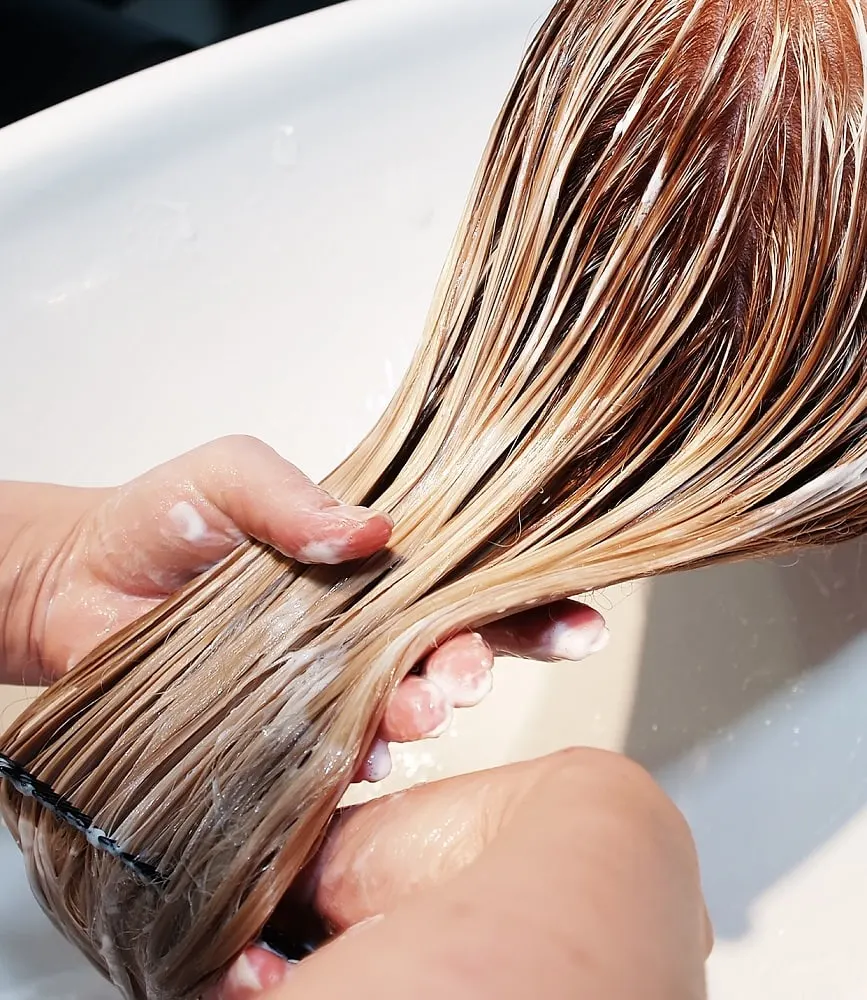
Deep conditioners repair hair that has been damaged by chemical treatments. It should be applied at least once a week for best results.
Do not forget to choose conditioners that contain natural ingredients. You can also make your own conditioner at home. One of the most common homemade conditioners is a mayonnaise hair mask.
This mask contains mayonnaise, vinegar, eggs, and oil. These ingredients create a combination that repairs, nourishes, and strengthens your hair.
Applying a mayonnaise mask is very simple. Make sure to coat all areas of burnt hair and place the plastic cap on your head.
The mask should remain on your hair for at least an hour. After this period, remove the mask and wash your hair with a mild shampoo.
You can also apply natural conditioners such as aloe vera or honey, which are known for their soothing and moisturizing properties.
Apply these to your hair as a mask and leave them on for a period of time before washing them off.
3. Use salon-grade cleansers and shampoos to clean your hair
If your hair has been burnt by chemicals, you need to thoroughly wash your hair with a high-quality shampoo.
Avoid harsh shampoos containing propylene glycol, ammonium, sulfates, sodium, and other harsh compounds. These ingredients will further dry out the moisture in your burnt hair, making the situation worse.
A good option is to use cleansers made from natural sources. The ingredients contained in such shampoos are mild and gentle on the scalp and hair. Another great option is to use a cleanser that contains glycerin and panthenol.
As a humectant, glycerin moisturizes dry and damaged hair. Panthenol, on the other hand, acts as a humectant, emollient, and adds volume to the cuticle.
4. Apply keratin

To master how to repair burnt hair, you need to know the role of keratin in hair growth.
Keratin is an important protein that protects the outer layer of your hair’s cuticle. This protein plays an important role in hair structure, flexibility, and overall health. Unfortunately, when hair burns, keratin is reduced.
To replenish the keratin in your hair, you should use keratin shampoos, conditioners, serums and creams. Products containing this protein contain keratin hydrolyzate as one of the ingredients.
Keratin products not only repair dry hair, but also make it more resistant to damage.
5. Avoid sun damage
When your hair is burnt, avoid anything that can make the condition worse. Unfortunately, some people ignore the effects of the sun on their hair. The sun won’t burn your hair, but it will cause significant damage.
Prolonged exposure to the sun’s harmful rays, UVA and UVB, weakens the hair cuticle. Signs of sun damage to your hair include:
- drying
- split ends
- Frizz
- thinning
- Color fading
When the sun’s rays hit your scalp, it can cause sunburn. We recommend applying a serum that blocks harmful UV rays. You can also cover your head and avoid going out on sweltering days.
6. Henna treatment
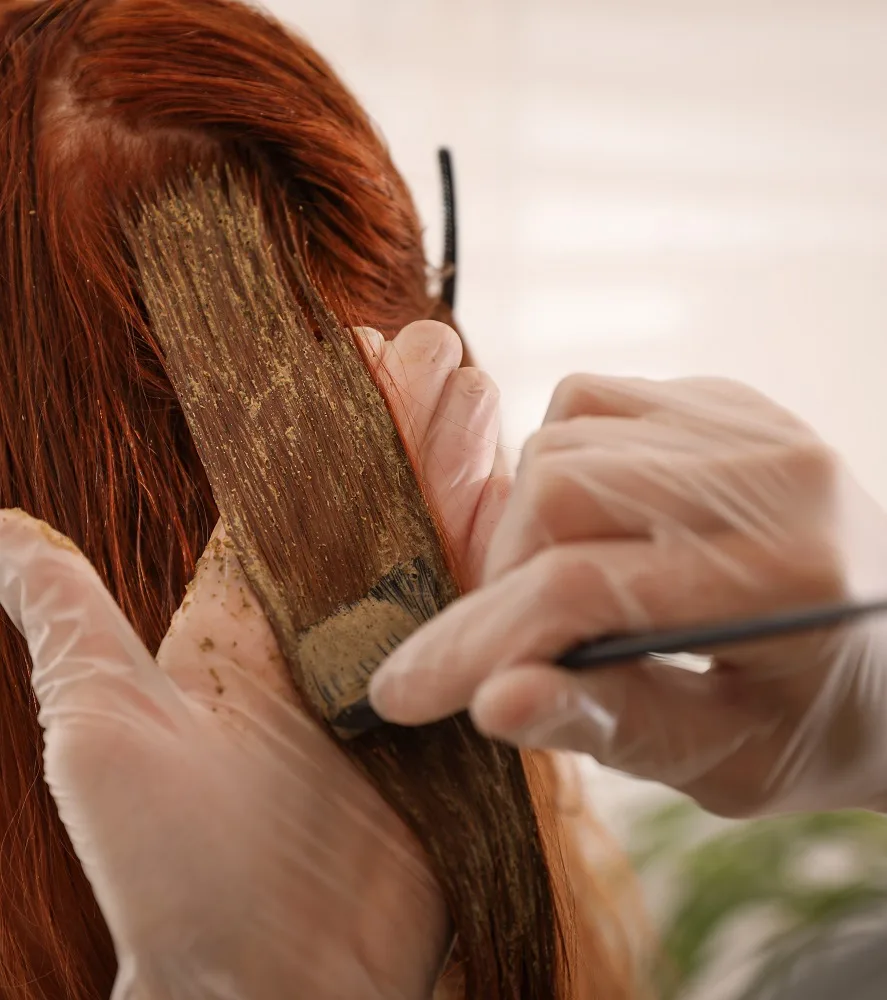
Most people think that henna is only for covering gray hair and restoring youthful hair. However, this magical herb has many benefits for hair.
It may be the ultimate way to cure your burnt hair. Henna can reverse damage caused by chemical or heat treatments. This is done as follows.
- Repairs damaged hair cuticles
- deep conditioning hair
- Nourishes hair roots and prevents hair breakage
- Maintains pH balance of scalp and hair
Henna, a natural ingredient, can be mixed with water and applied directly to burnt hair. That being said, henna is more effective when combined with other natural ingredients.
You can make a powerful mixture by combining henna powder, eggs, plain yogurt, lemon, and black tea. Apply this mixture on your hair and leave it for 4 hours. Rinse it off to get softer, shinier hair.
How to prevent hair damage from chemicals
The best way to deal with heat-damaged hair is prevention.
Read all instructions and warnings before using hair chemicals. Pay close attention to how long chemical treatments last on your hair.
You may want to set a timer to guide you. If too many chemicals remain on your head, your hair will burn.
You may need to nourish your hair first before opting for chemical treatments. Use oils and conditioners to help hair growth.
If the chemicals are too harsh on your hair or scalp, you should stop using them.
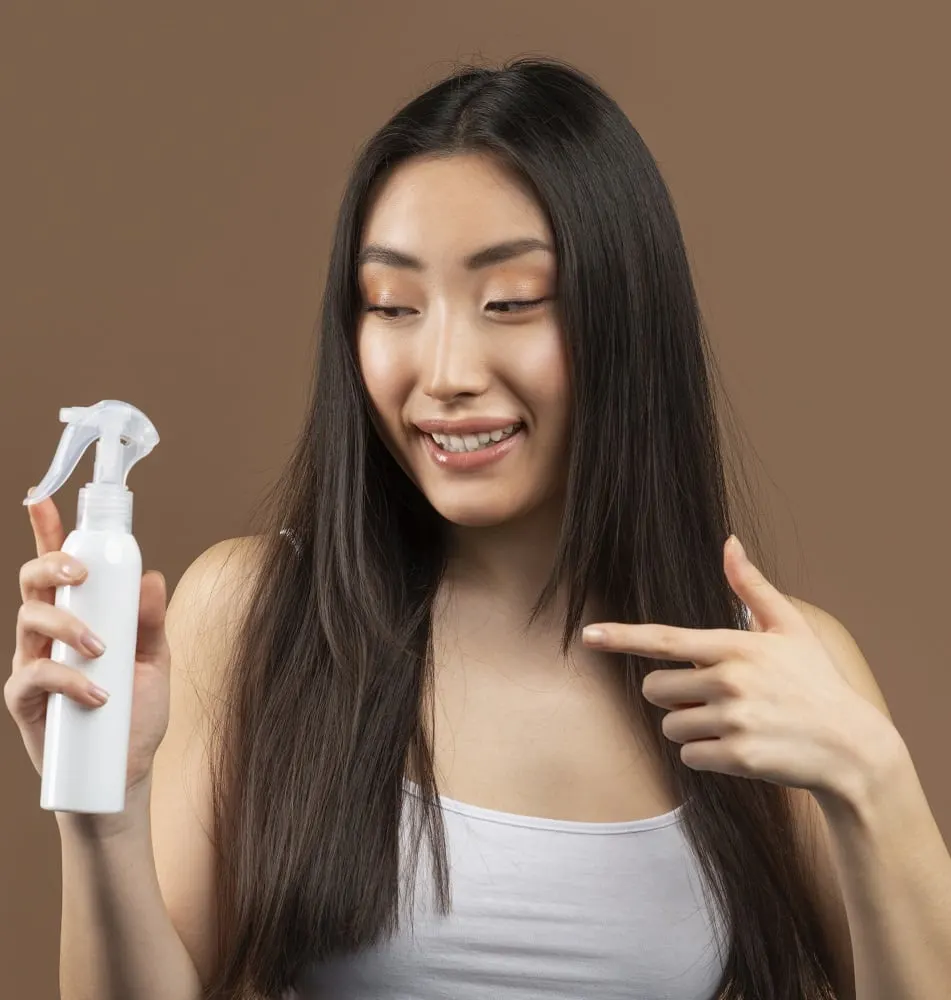
Always use caution when using hot styling tools such as curling irons or flat irons. If you make a mistake, these tools can burn your hair. There are several things to consider when using such tools.
To prevent hair damage from hot styling tools, it’s important to adopt a comprehensive hair care routine. Here are some detailed tips to minimize the risk of damage.
use minimal heat
Not all hair types require the same amount of heat. Fine or damaged hair should be styled at lower temperatures, while thicker, coarser hair can tolerate higher temperature settings.
Most styling tools have adjustable temperature settings, so choose the lowest setting that works for your hair type.
Only minimal heat is required to straighten hair. For thin hair, you should use a temperature below 140 degrees Celsius. For thick hair, use a temperature of around 200 degrees Celsius.
Using a ceramic or tourmaline straightener will distribute the heat more evenly, reducing the risk of hot spots that can burn your hair.
Avoid exposing any part of your hair to a heat source for too long. Keep it moving to prevent overheating and damage to certain sections.
use a protectant
Apply a heat protection spray or serum to your hair before using hot styling tools. It is most effective when applied to hair immediately before styling.
These products form a protective barrier on the hair shaft, reducing moisture loss and protecting your hair from high temperatures.
dry your hair
Always make sure your hair is completely dry before using hot styling tools. You can also use a hair dryer, but a microfiber towel is the best way to protect your hair.
Applying heat-based styling tools, such as irons, to wet or damp hair can cause more damage than styling dry hair.
After styling, wait until your hair has cooled before touching it or applying any finishing products. This will help style and minimize heat damage.
Use hot styling tools occasionally
Regular use of flat irons and curling irons can cause permanent damage to your hair. Use these heat styling tools only occasionally.
You can also straighten or curl your hair without using a iron or curling iron. If you find it difficult to straighten your natural hair without using heat, you can straighten your hair with a flat iron and maintain it using another option.
summary
Stringy, split ends, breakage, dryness, unmanageability, and tangles are signs that your hair is burnt or heat-damaged.
Consider a henna treatment that uses hot oil treatments, high-quality deep conditioners, gentle shampoos, and keratin products to protect your hair from sun damage and repair your hair without cutting it.
Prevent future damage by carefully following chemical treatment instructions and using heat styling tools wisely.


